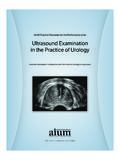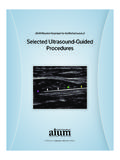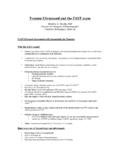Transcription of Ultrasound of the Female Pelvis - aium.org
1 AIUM Practice Parameter for the Performance ofUltrasound of the Female Pelvis 2014 by the American Institute of Ultrasound in Medicine Parameter developed in collaboration with the American College of Radiology (ACR), the American College of Obstetricians and Gynecologists (ACOG), the Society for PediatricRadiology (SPR), and the Society of Radiologists in Ultrasound (SRU). 12/1/15 3:02 PM Page 1 The American Institute of Ultrasound in Medicine (AIUM) is a multidis-ciplinary association dedicated to advancing the safe and effective useof Ultrasound in medicine through professional and public education,research, development of parameters, and accreditation. To promotethis mission, the AIUM is pleased to publish, in conjunction with theAmerican College of Radiology (ACR), the American College ofObstetricians and Gynecologists (ACOG), the Society for PediatricRadiology (SPR), and the Society of Radiologists in Ultrasound (SRU),this AIUM Practice Parameter for the Performance of Ultrasound of the Female Pelvis .
2 We are indebted to the many volunteers who contributed their time, knowledge, and energy to bringing this documentto AIUM represents the entire range of clinical and basic scienceinterests in medical diagnostic Ultrasound , and, with hundreds of volun-teers, the AIUM has promoted the safe and effective use of Ultrasound inclinical medicine for more than 50 years. This document and others likeit will continue to advance this parameters of the AIUM are intended to provide the medicalultrasound community with parameters for the performance andrecording of high-quality Ultrasound examinations. The parametersreflect what the AIUM considers the minimum criteria for a completeexamination in each area but are not intended to establish a legal stan-dard of care.
3 AIUM-accredited practices are expected to generally fol-low the parameters with recognition that deviations from these param-eters will be needed in some cases, depending on patient needs andavailable equipment. Practices are encouraged to go beyond theparameters to provide additional service and information as Sweitzer Ln, Suite 100 Laurel, MD 20707-5906 USA800-638-5352 2014 American Institute of Ultrasound in 12/1/15 3:02 PM Page clinical aspects contained in specific sections of this parameter (Introduction, Indications,Specifications of the Examination, and Equipment Specifications) were developed collabora-tively by the American Institute of Ultrasound in Medicine (AIUM), the American College ofRadiology (ACR), the American College of Obstetricians and Gynecologists (ACOG), theSociety for Pediatric Radiology (SPR), and the Society of Radiologists in Ultrasound (SRU).
4 Recommendations for physician requirements, written request for the examination, documen-tation, and quality control vary among the organizations and are addressed by each parameter has been developed to assist physicians performing sonographic studies of thefemale Pelvis . Ultrasound examinations of the Female Pelvis should be performed only whenthere is a valid medical reason, and the lowest possible ultrasonic exposure settings should beused to gain the necessary diagnostic information. In some cases, additional or specializedexaminations may be necessary. Although it is not possible to detect every abnormality, adher-ence to the following parameter will maximize the probability of detecting most Ultrasound examinations of the urinary bladder, see the AIUM Practice Parameter for thePerformance of an Ultrasound Examination of the Abdomen and/or for pelvic sonography include but are not limited of pelvic pain; of pelvic masses; of endocrine abnormalities, including polycystic ovaries; of dysmenorrhea (painful menses); of amenorrhea; of abnormal bleeding; of delayed menses; of a previously detected abnormality; , monitoring, and/or treatment of infertility patients;10.
5 Evaluation in the presence of a limited clinical examination of the Pelvis ;11. Evaluation for signs or symptoms of pelvic infection;12. Further characterization of a pelvic abnormality noted on another imaging study;13. Evaluation of congenital uterine and lower genital tract anomalies;14. Evaluation of excessive bleeding, pain, or signs of infection after pelvic surgery, delivery, orabortion;15. Localization of an intrauterine contraceptive device;16. Screening for malignancy in high-risk patients;17. Evaluation of incontinence or pelvic organ prolapse;18. Guidance for interventional or surgical procedures; and19. Preoperative and postoperative evaluation of pelvic AIUM PRACTICE PARAMETER Ultrasound of the Female 12/1/15 3:02 PM Page of Personnel See for AIUM Official Statements including Standards and Guidelines for theAccreditation of Ultrasound Practicesand relevant Physician Training Request for the ExaminationThe written or electronic request for an Ultrasound examination should provide sufficientinformation to allow for the appropriate performance and interpretation of the request for the examination must be originated by a physician or other appropriatelylicensed health care provider or under the provider s direction.
6 The accompanying clinicalinformation should be provided by a physician or other appropriate health care provider famil-iar with the patient s clinical situation and should be consistent with relevant legal and localhealth care facility of the Examination The following sections detail the examination to be performed for each organ and anatomicregion in the Female Pelvis . All relevant structures should be identified by the transabdominaland/or transvaginal approach. A transrectal or transperineal approach may be useful in patientswho are not candidates for introduction of a vaginal probe and in assessing the patient withpelvic organ prolapse. More than 1 approach may be ,2A. General Pelvic PreparationFor a complete transabdominal pelvic sonogram, the patient s bladder can be distended if nec-essary to displace the small bowel from the field of view.
7 Occasionally, overdistention of thebladder may compromise the evaluation. When this occurs, imaging may be repeated after par-tial bladder emptying. If an abnormality of the urinary bladder is detected, it should be docu-mented and a transvaginal sonogram, the urinary bladder is preferably empty. The patient, the sonogra-pher, or the physician may introduce the vaginal transducer, preferably under real-time moni-toring. Consideration of having a chaperone present should be in accordance with local UterusThe vagina and uterus provide anatomic landmarks that can be used as reference points for theother pelvic structures, whether normal or abnormal. In examining the uterus, the followingshould be evaluated: (1) the uterine size, shape, and orientation; (2) the endometrium; (3) themyometrium; and (4) the cervix.
8 The vagina may be imaged as a landmark for the cervix. The overall uterine length is evaluated in a sagittal view from the fundus to the cervix (to theexternal os, if it can be identified). The depth of the uterus (anteroposterior dimension) ismeasured in the same sagittal view from its anterior to posterior walls, perpendicular to thelength. The maximum width is measured in the transverse or coronal view. If volume meas-urements of the uterine corpus are performed, the cervical component should be excludedfrom the uterine length AIUM PRACTICE PARAMETER Ultrasound of the Female 12/1/15 3:02 PM Page 4 Abnormalities of the uterus should be myometrium and cervix should beevaluated for contour changes, echogenicity, masses, and cysts.
9 Masses that may require follow-up or intervention should be measured in at least 2 dimensions, acknowledging that it is notusually necessary to measure all uterine fibroids. The size and location of clinically relevantfibroids should be endometrium should be analyzed for thickness, focal abnormalities, echogenicity, and thepresence of fluid or masses in the cavity. The thickest part of the endometrium should be meas-ured perpendicular to its longitudinal plane in the anteroposterior diameter from echogenic toechogenic border (Figure 1). The adjacent hypoechoic myometrium and fluid in the cavityshould be excluded (Figure 2). Assessment of the endometrium should allow for variationsexpected with phases of the menstrual cycle and with hormonal 7It shouldbe reported if the endometrium is not adequately seen in its entirety or is poorly may be a useful adjunct to evaluate the patient with abnormal uterinebleeding or to further clarify an abnormally thickened endometrium.
10 (See the AIUM PracticeParameter for the Performance of Sonohysterography.) If the patient has an intrauterine contra-ceptive device, its location should be documented. 2014 AIUM PRACTICE PARAMETER Ultrasound of the Female 1. Measurement of endometrial thickness. The endometrial thickness is measured in its thickestportion from echogenic to echogenic border (calipers) perpendicular to the midline longitudinal plane ofthe 12/1/15 3:02 PM Page 5 The addition of 3-dimensional to 2-dimensional Ultrasound (transabdominal, transvaginal,transperineal, and/or transrectal) can be helpful in many circumstances, including but not lim-ited to evaluating the relationship of masses with the endometrial cavity, identifying uterinecongenital anomalies and a thickened and/or heterogeneous endometrium, and evaluating thelocation of an intrauterine device and the integrity of the pelvic ,9 C.













